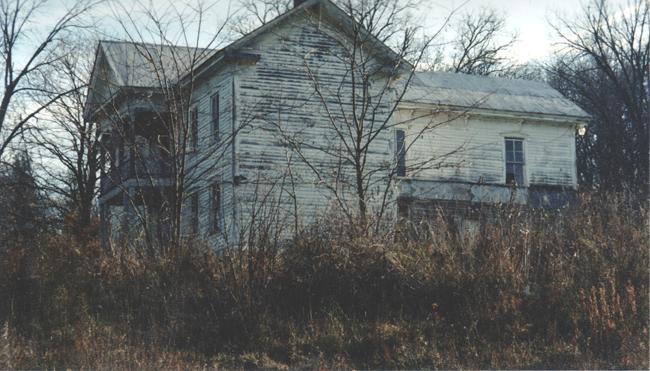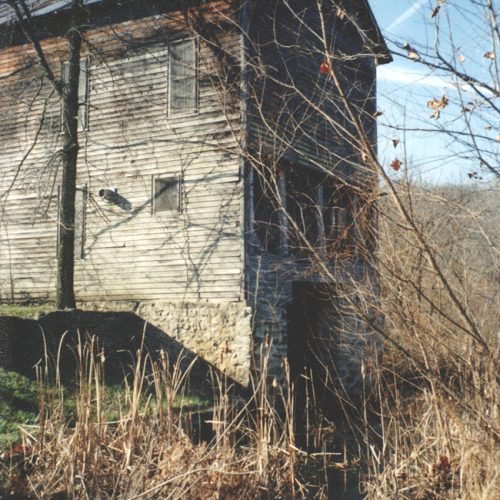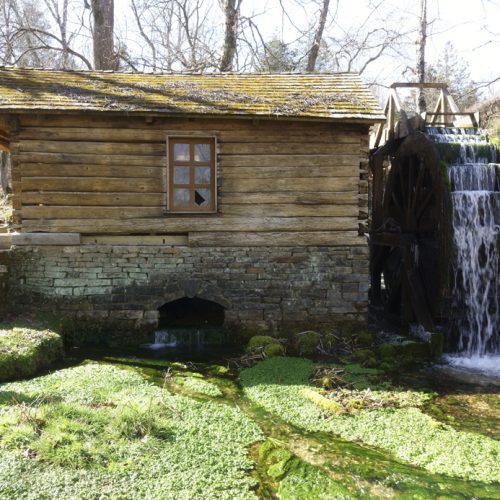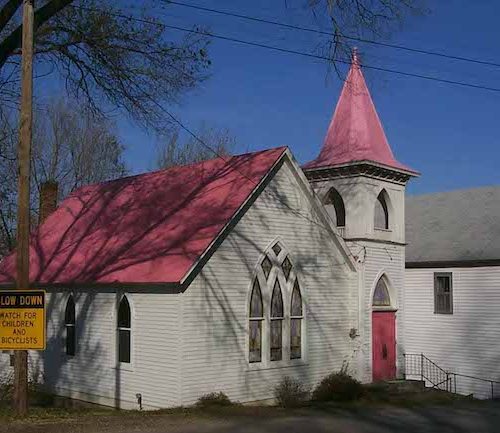“We lay claim to the fact that our little burg is far ahead of any other section of the county. First, in manufacturing industry; second, as being the oldest settled point in the county; third, it has been owned, occupied and operated by the best, most energetic and enterprising people who live in their time (the present owner excepted); fourth, while in the past it has always been up with the times, so in the future it is expected to keep pace with the progress of the country.”~Article in “Maries County Gazette” in the late 1890s, written by Tom Bray, owner of the Pay Down Mill
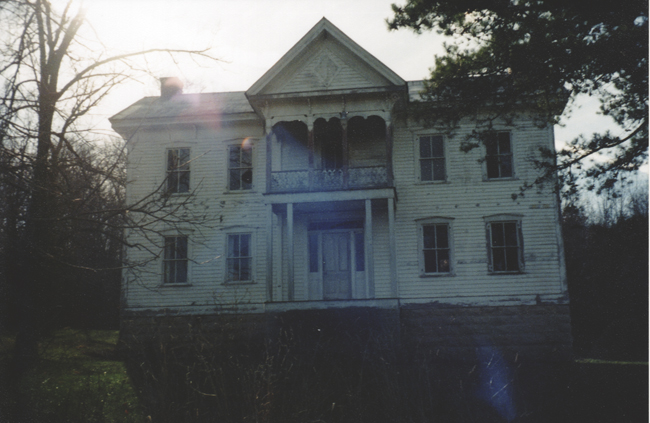
Pay Down: Memories of a Little Mill Town
As told to me, Barbara Baird, by Ethelyn Bray Ammerman, 2000
As I drive along Mo. Hwy. 42 in Maries County, I pass through the old town of Pay Down. I compare the present area with the thriving little settlement I remember from my childhood. Many of the old buildings are gone. All that is left now is the old flour mill that my great-grandfather built in 1868, the family home that my grandfather built in 1886, the old general store building and the slave house.
The mills and most of the property at Pay Down belonged to my family for a little over 100 years. The story goes that my great-grandfather, William Bray, brought his two sons and a daughter from England in 1856. For some reason, and rumor has it that a family feud kept my grandmother in England, he did not bring his wife over. About ten years later, when his daughter Louisa went on her honeymoon to England, she brought her mother back home to Pay Down.
My great-grandfather also brought machinery to operate a woolen mill with him. He set up his first woolen mill, and added a flour mill, at a location near Vienna, Mo. Then, he bought the Pay Down Mill in 1866. Shortly after acquiring Pay Down, the flour mill burned and he to rebuild it in 1868.
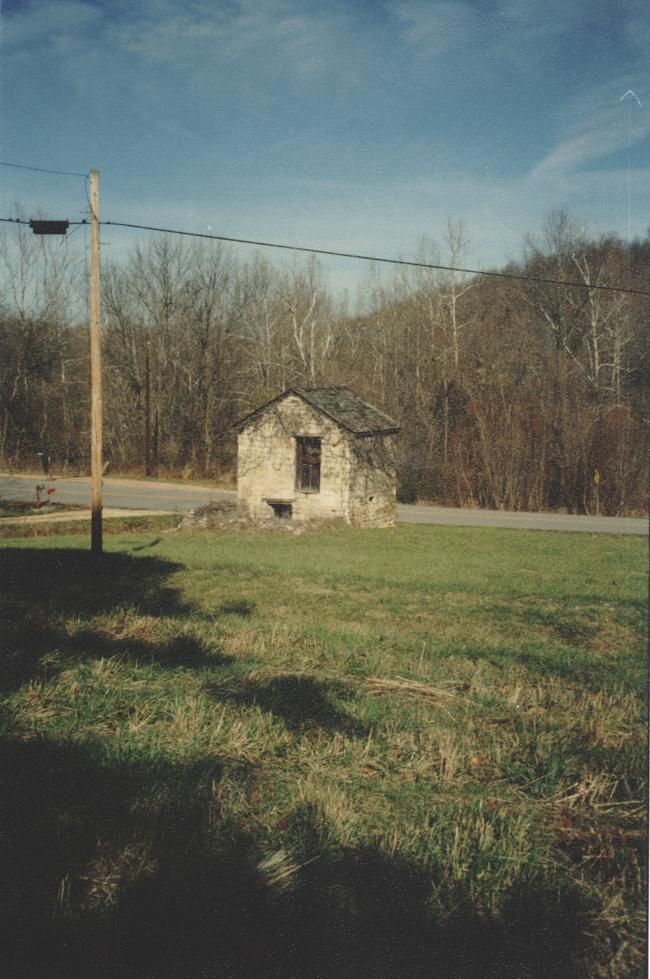
When he bought the place, the slave quarters had been standing nearly 25 years. Since my great grandfather was from England, he had never believed in slavery and would not have owned slaves. The cut-stone slave house was built by Charles Lane, who was the first owner of the property, somewhere between 1826-1829. He had four slaves, and we know that three of them were Asa, Flora and Mingo. When my father owned Pay Down, he used the old quarters for a blacksmith shop. Several years ago, at my father’s request, the county put in the new road and purposely routed the road away from the quarters. Even then, my dad appreciated history.
Pay Down was in its heyday before and during my great-grandfather’s days there. The post office, which was located in a back room of the flour mill, opened in 1839. The old general store was also constructed in the 1830s, and supplied the settlers in the area with produce, “necessaries” and articles they couldn’t raise on their farms.
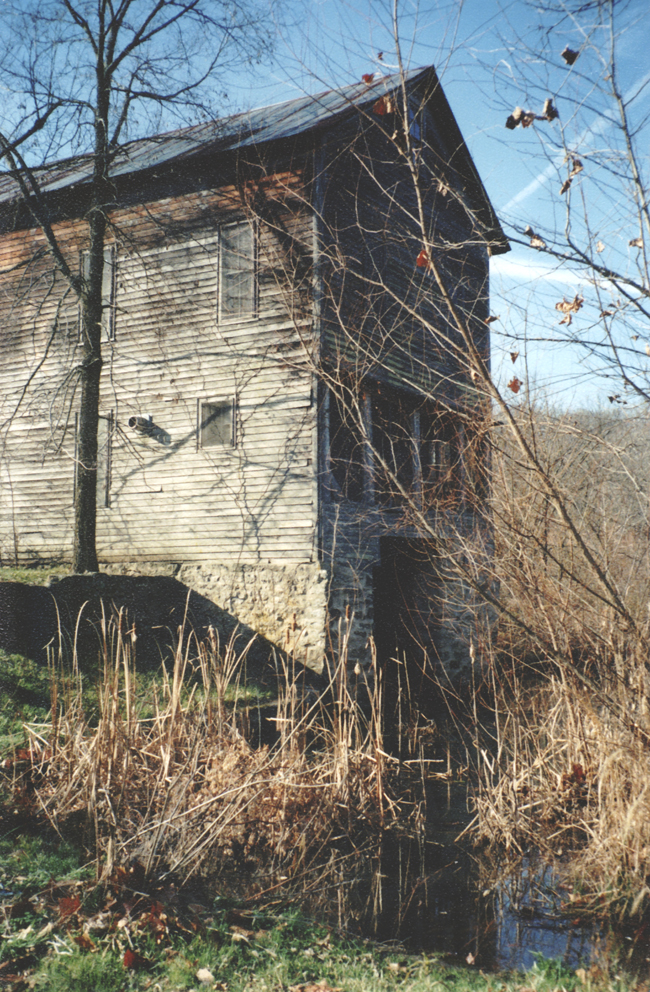
Pay Down Mill operated because of an abundance of water, which flowed from seven springs into the main spring called Pay Down Spring. (Today, it’s called Mill Creek.) Men, probably some of them slaves, dug raceways which channeled the spring water down to the mills.
My family was not the beneficiary from the water supply. By cooperating with another miller who lived downstream, two families were able to operate three mills from the same stream.
I remember that the woolen mill was operated by an undershot water wheel. The woolen mill was about as large a building as the grist mill. A dam held the water from the branch back until a large supply was collected and then the flood gates were opened and the rush of water down the race turned the water wheel, which in turn operated the machinery. After the water passed the water wheel, it flowed on down the steam to be caught by a dam at the flour mill, located downstream from the woolen mill.
When sufficient water was collected, the gates were opened to permit the water to pass along the side of another water wheel to turn the flour mill’s machinery.
Another miller, Mr. Charles Given, had his mill located farther down the stream near the river. He, in turn, dammed the water to operate his mill. The water, when released from the mill, flowed in the Gasconade River.
Over on the Gasconade River, just down the road from Pay Down, industrious businessmen, such as Thomas James and Samuel Massey, from the Maramec Ironworks in St. James, used Bloom Landing to load and unload the steamboats with supplies and goods. At this time, specifically designed, shallow-draft steamboats traveled the Gasconade River. Because of Bloom Landing, Pay Down was operating at its peak, catching the traffic to and from the river.
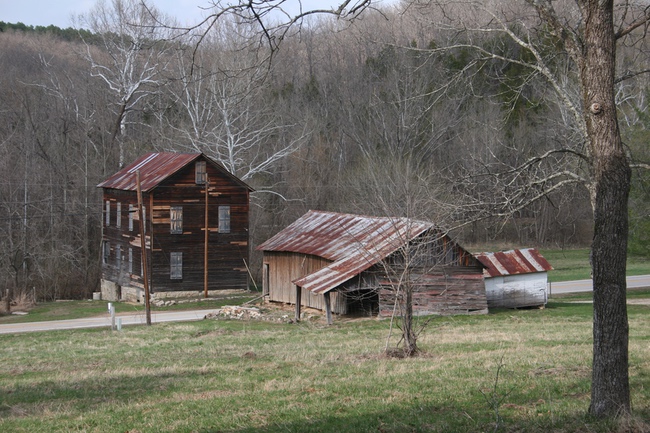
My grandfather, Thomas Bray, helped my great-grandfather with the business of running the flour mill and the woolen mill. In 1883, my great-grandfather died, and my grandfather inherited the mills.
The Bray families lived in small log houses scattered around the property, which contained 640 acres. My grandfather wanted to build a grand house, so in 1887, he, along with Dr. William Bowles and Alonzo Walker, purchased architectural plans for a two-story Victorian house. The three men built their houses at the same time. Poplar wood, cut from the property, furnished the siding.
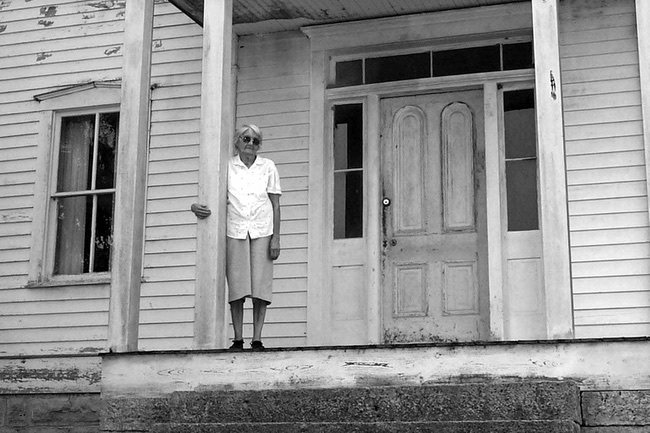
The house is simple, yet elegant, with a double parlor, and a beautiful hand-carved banister that curves as it goes upward. Outside, the symmetry is reproduced with two forward facing balconies. My ancestors used red trim on the front porches, and to this day, you can still see the red trim. Whenever my dad or other occupants have tried to cover the red, it always worked its way through the white paint. Four generations of my family lived in that house until my mother’s death in 1970. Today, our house is the only one of the three houses still standing.
In 1906, upon the death of my grandfather, my father, Seth Bray, inherited the mills and house. I did not grow up at Pay Down. In the early 1900s, my mother, Walsy Bray, suffered from recurring bouts of malaria. Our family doctor told her that she would have to get away from this damp, mosquito-filled surrounding if she expected to live much longer. Soon after that, my father packed up the loom machines and moved them and our family to St. James. I was born the next year, in 1914. While we lived in St. James, my dad hired William Albertson to manage the flour mill at Pay Down.
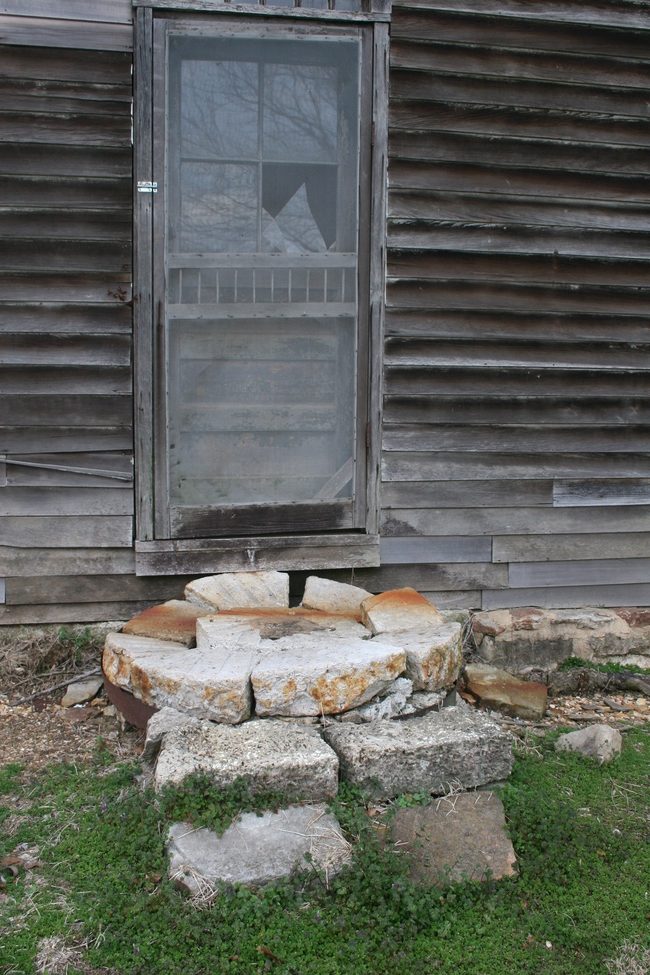
Stories about Pay Down
When I was a little girl, we’d go down there in the summer times, traveling on wagon roads unfit for anything but our old Model T. One summer, we camped at Pay Down, and it was during these trips, I’d hear stories about Pay Down.
People have often said that Pay Down got its name from one of my ancestors, on account of his being so stingy that he insisted on having payment for goods up front. I don’t think that explanation is possible, since Pay Down was here and named before my ancestors bought it.
Here is what I’ve heard and what seems logical. There was a fur trader at the old general store. Someone had caught an extra large coon and sold its skin to the trader. Later that day, another trapper slipped in the back room and stole the coonskin out. Several times that day, the same coon hide was bought and stole, bought and stole. That evening, the trader was bragging about all his coonskins, a lot for hides for so little he had to pay down. The other trappers said they wanted to see all those skins, and when the trader went to the back room to get the skins, there was only one! So, the trappers owned up to their prank and gave the trader back his money. They all had a laugh over the practical joke, and since then, the place has been called Pay Down.
Another story that was passed on to me was the one about the boys who didn’t want to be conscripted by the Union during the Civil War. The story says that one day, some Union soldiers rode into Pay Down, dismounted and hitched their horses. They said they were looking for some men for the army. At this time, it happened that there were a few young men riding down the hill to Pay Down. As they came out of the timber, they saw the Union soldiers standing around the store. They slowly rode down the slope, discussing what they were going to do. When they reached the store, they spoke to the soldiers. The boys all started to dismount at the same time, but as soon as their feet hit the ground, they bolted right back up into their saddles, spurring their horse on and away from Pay Down. They raced those horses to the river and after crossing it, scattered in all directions. The soldiers had to run across the road and untie their horses to begin pursuit; that bit of time gave the boys a head start and they all escaped. If the boys hadn’t come down and had gone back up the hill instead, they would have hit flat prairie land and been easily run down and caught and conscripted.
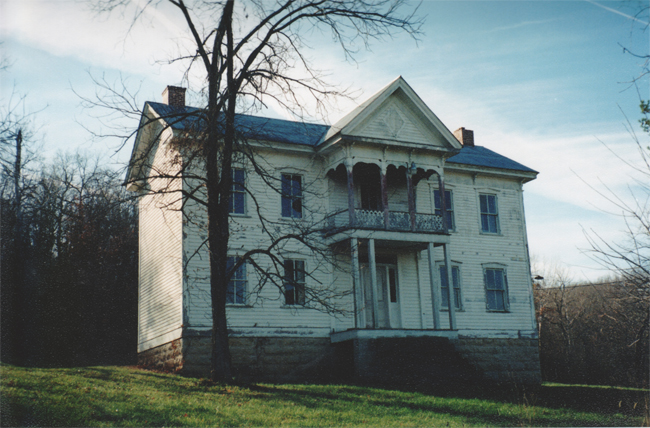
My mother told me a story about my dad that is interesting. Before I was born, and when my parents still lived at Pay Down, whenever there came a heavy rain, the creek would get very high. Tree limbs and whole trees coming down the creek could knock the dam out. So, Dad would go down to the dam and open the gates. He would then guide the debris through the gate with a long pole. He always took a lantern and set it on the dam. My mom said that as long as she could the lantern, she was satisfied that Dad was safe. In later years, she admitted that she knew Dad could have been drowned in the high water of the creek, or hurt by the heavy logs. She said she probably took false comfort in seeing the lantern shining in the dark.
Quite possibly, the most intriguing story to come out of Pay Down is the murder of Marsh Cahill. It was the Fourth of July in 1910, and Dad and Mr. Given were hosting a picnic in the timber between the two mills. Marsh Cahill played the fiddle at the picnic. He’d had some trouble with three men from two families who were at the picnic, concerning a young girl. The quarrel erupted into a fight and Cahill was stabbed in the heart. He was carried to his parents’ home near the mill at Pay Down. He bled to death and his blood stains remained on the porch and on the floor of the house until the house was destroyed a few years ago. The three men were convicted of murder and sent to a penitentiary.
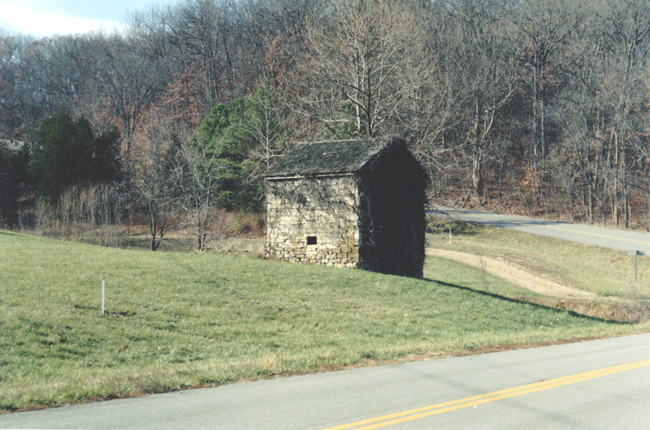
Sometimes, I wish I’d asked more about my family. I could have talked to Alice Johnson, a former slave, who worked for my family and the Jones’ family after she was set free. She had been a slave for the first few years of her childhood and rumor has it that her father was Mr. Johnson. She knew a lot about the Bray family. I remember that she would only eat with the Jones’ family when she was alone with them. Even if my parents would come over to eat supper with the Jones’ family , she would insist on eating in the kitchen – alone. My mother said that Mrs. Jones would say, “Alice, it’s just Seth and Walsy. Come on in, and eat,” but, that didn’t make any difference to her.
Time to Go Back
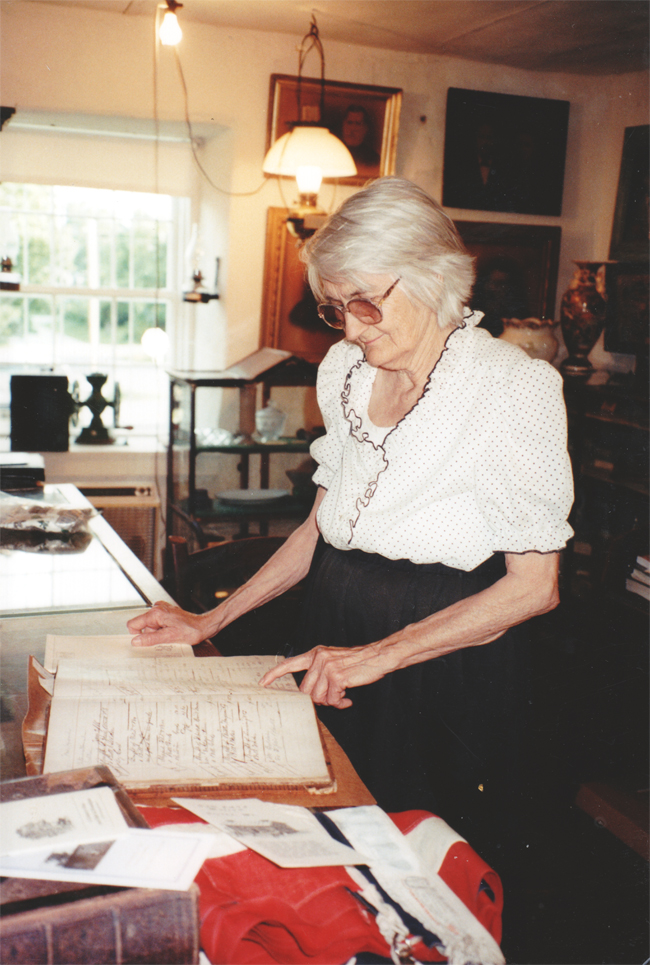
In 1932, when I was 17, my family moved back to Pay Down. It was quite a change for me. I knew little about farm life, as I had spent all of my years in a small town. But, I soon learned to love the farm. Although I had a couple of girlfriends over in Vienna, I mostly enjoyed tramping through the woods – hunting, horseback riding or just walking. When I think back on where I would go, I don’t know how I had the nerve enough to go out in those woods by myself, but I did. Then again, I was hunting for something to eat. But sometimes, I’d go out without the gun and take the dogs. Usually, I’d get the gun.
By then the mills were no longer running. Dad brought back some of the looms. The looms were now powered by a gasoline engine. He set them up in the carriage house and made batting for comforters and quilts. He also sold off 240 acres of timber.
In 1934, I began my 45 years as a teacher in the one-room schoolhouse at Pay Down. This was a new experience for me, since a one-room school with all grades together was certainly different than town schools with one grade to a room. I spent the next 38 years at Pay Down, teaching in different schools and raising my two boys. As I had lost my husband early on in our marriage, my wonderful father and mother helped me to raise the boys.
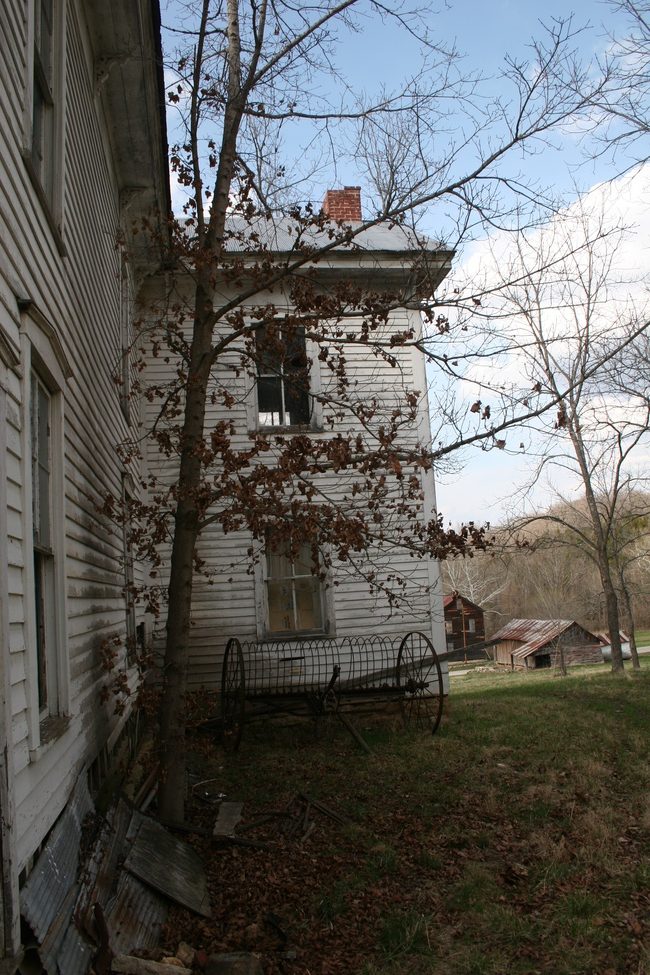
Today (2000)
When I compare Pay Down of yesteryear to the Pay Down of today, I can’t help but feel sad. Then, I remember the happy times I spent there, tramping through the woods and hills and walking along the cool spring branch on a hot summer day. Also, I remember the family gatherings during summer vacation and especially the Christmas holidays, when all the family came home.
I realize that life goes on and many changes occur. We have to remember the happy times and accept the changes.
